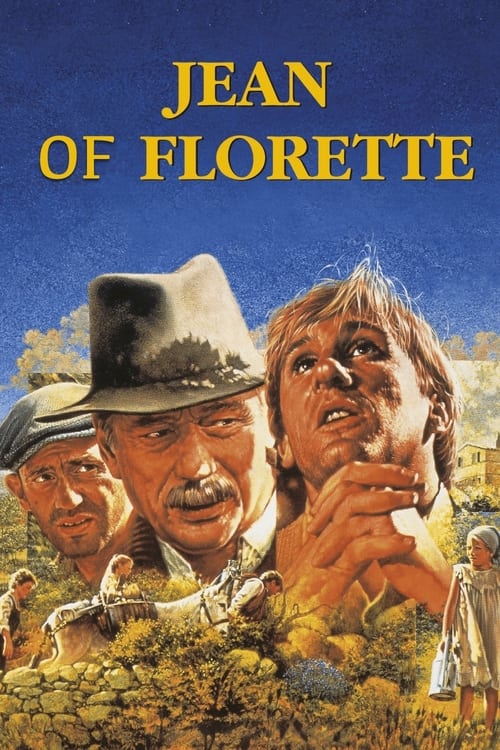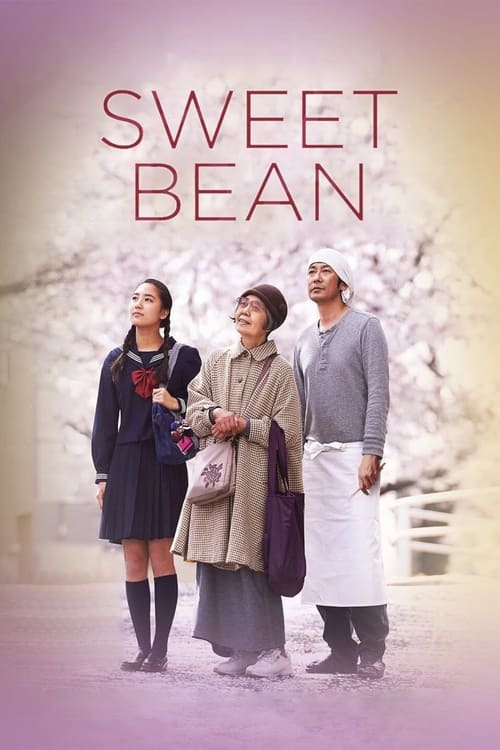
Shoplifters
After one of their shoplifting sessions, Osamu and his son come across a little girl in the freezing cold. At first reluctant to shelter the girl, Osamu’s wife agrees to take care of her after learning of the hardships she faces. Although the family is poor, barely making enough money to survive through petty crime, they seem to live happily together until an unforeseen incident reveals hidden secrets, testing the bonds that unite them.
Quotes from Movie Shoplifters
Memorable Scenes from Movie Shoplifters
The Family's Bond
The opening scene introduces the core family. We see Osamu and his son Shota shoplifting groceries. The tenderness in their bond is evident as they share playful moments and discuss their daily lives. This moment shows how they survive together in poverty. The pivotal moment comes when they successfully steal food, which highlights their desperation but also the unity in their struggle. This scene sets the tone for the rest of the film, deepening our understanding of their close-knit family dynamics, despite their illegal way of living.
Context: This moment establishes the family's survivalist mentality and lays the groundwork for their relationships and moral dilemmas throughout the film.
Meeting Yuri
Osamu and Shota find a young girl named Yuri alone in the cold. They take her in, showing warmth and care. The emotional weight is evident as they bring her home. This moment signifies the family's moral ambiguity; they are thieves, yet here they act with compassion. The pivotal moment is when Yuri smiles for the first time, melting the audience's hearts. Afterward, Yuri becomes a part of their family, enhancing their already strong emotional bonds and showing the power of love in hardship.
Context: Yuri's arrival marks a significant shift in the family's dynamics and emphasizes the central theme of family, regardless of blood ties.
The Happy Moments
The film portrays several happy moments of the family, like sharing food and playing games. These scenes are filled with laughter and joy, showcasing their ability to find happiness in small things. The pivotal moment arrives when they celebrate a makeshift birthday, showing how love triumphs amidst challenges. The aftermath leaves viewers feeling warm yet melancholic, as the joy is juxtaposed with their grim living conditions. These scenes stir feelings of joy and sadness, highlighting the theme of finding light in darkness.
Context: These joyous moments deepen the audience's emotional connection to the characters, making their struggles more poignant.
A Glimpse of Reality
When Shota interacts with his schoolmates, their conversations reveal his struggles between normalcy and the family's lifestyle. He faces bullying and ostracism, heightening tensions. The pivotal moment is when he stands up for himself, showcasing his resilience. This scene reveals the harsh reality outside their family's bubble and creates a profound contrast with their home life. It deepens our understanding of Shota's internal conflict.
Context: This scene highlights the contrast between Shota's struggles and the family's stolen moments of joy, illustrating the film's exploration of societal expectations.
Osamu's Confession
Osamu shares his past with Shota, revealing his reasons for becoming a thief—his childhood and the system's failure. The weight of his words resonates deeply. The pivotal moment occurs when he expresses regret, showing vulnerability. This confession enriches the audience's understanding of his motivations, adding depth to his character. The aftermath emphasizes the film's theme of survival versus morality, making viewers reflect on their choices.
Context: This moment is crucial in revealing Osamu's character and the societal pressures that shape his actions.
The Crisis Point
Tensions rise when the police become involved following a theft. The family fears losing everything they’ve built together. The pivotal moment is when the police confront them, and the fear is palpable. It shifts the narrative's urgency, emphasizing the risks they face. Afterward, the bond between family members grows stronger as they unite under pressure, highlighting themes of loyalty.
Context: This crisis heightens the stakes for the family and accentuates their struggle against a system that threatens to tear them apart.
Yuri's Departure
When authorities discover Yuri's presence, her potential removal from the family brings tears. The sad acceptance from Osamu and the children shows their love. The pivotal moment is when Yuri says goodbye with a heart-wrenching smile. This scene starkly shows the fragility of their family unit and the emotional toll of societal norms. It deepens the tragedy of their circumstances.
Context: Yuri's departure reflects the harsh realities of their life and is a powerful commentary on the meaning of family.
Shota's Resolve
After Yuri leaves, Shota faces a dilemma about continuing his family's lifestyle or seeking a more traditional life. The pivotal moment occurs when he rejects a chance to conform, choosing loyalty to his family instead. This decision highlights the emotional struggle of growing up in an unconventional situation. The aftermath sees Shota grappling with his identity, inspiring viewers to contemplate the meaning of family loyalty.
Context: Shota's choice becomes crucial in shaping his character arc, illustrating the complexities of familial bonds.
The Heist
The family embarks on a risky and emotional shoplifting mission together. Their camaraderie shines through, despite the danger. The pivotal moment occurs when they narrowly escape capture, showcasing their teamwork and deep love for each other in a way that resonates with viewers. The aftermath brings a mix of adrenaline and anxiety, highlighting the lengths they go to survive together.
Context: This scene underscores the film's core themes of family and morality, emphasizing their shared dedication to one another.
Glancing at the Past
Osamu stumbles upon an old photograph of his family while cleaning. The nostalgia hits hard as we see the contrast between his past and present. The pivotal moment is when he breaks down, revealing his regrets. This reflects his longing for a different life, deepening our understanding of his character. This moment resonates with anyone who has felt the weight of nostalgia and lost opportunities.
Context: Osamu's reflections highlight the film's exploration of choices and the consequences they carry.
Kinship in Despair
When the family comes together after a challenging day, their solidarity brings a moment of calm. They comfort each other, sharing jokes and smiles. The pivotal moment is when they hold hands in a circle, reaffirming their bond amidst chaos. This portrayal of love in dire circumstances emphasizes their emotional resilience. It evokes feelings of warmth, underscoring how love can thrive even in hardship.
Context: This scene illustrates the importance of connection and support within a family, even one built on unconventional means.
Facing the Consequences
As the film progresses, the family grapples with the moral implications of their lifestyle. A confrontation about their actions leads to emotional dialogues. The pivotal moment comes when they face the reality of their choices, heightening the film's dramatic tension. This scene pushes characters into introspection, making viewers reflect on morality and survival. The aftermath challenges their relationships and forces them to reconsider their path.
Context: This moment exemplifies the film's exploration of morality, forcing both characters and viewers to confront their choices.
The Final Farewell
In a touching climax, Osamu holds Shota, realizing the impact of their life choices. Their farewell encapsulates their journey together. The pivotal moment arrives with Osamu’s heartfelt words, expressing his love and regrets. This emotional farewell leaves audiences in tears, reinforcing the film’s themes of love, sacrifice, and the harsh realities of family life. The aftermath shapes Shota’s future, showing hope amid despair.
Context: This scene serves as a poignant capstone to their relationship, highlighting the interplay of love and loss.
Emerging from the Shadows
Shota, now more independent, takes his first steps into a new life, reflecting on his past. This moment is significant as he chooses to move forward while carrying memories of his family. The pivotal moment is when he looks back one last time, a blend of sadness and hope in his eyes. This emotional moment resonates as a universal struggle for growth, evoking a bittersweet feeling. It signifies his acceptance of both past and future.
Context: Shota's emergence symbolizes resilience and the search for identity, a key theme in the film.
The Will to Move Forward
In the final moments, the family members reflect on their experiences. They gather around a makeshift meal, laughing and sharing stories. The pivotal moment occurs when they toast to family, embracing their life choices. This powerful scene blends joy and sorrow, leaving an indelible impression on viewers. It encapsulates the essence of family, love, and sacrifice, highlighting the bittersweet nature of their reality.
Context: This finale serves as a summary of the film's central themes, revealing the beauty found amidst life’s challenges.
Traditions and Heritages
The family shares stories from their pasts, bridging generational gaps and forging connections. The emotional weight of their shared histories comes to the forefront. The pivotal moment is when Osamu shares a memorable tale about his childhood. This story elicits laughter and tears, creating a sense of belonging. It emphasizes the importance of preserving their heritage amid struggles.
Context: This scene reinforces the film’s exploration of family ties and the significance of personal histories.
Eve Before the Reckoning
The night before a significant event, the family shares a quiet moment together, reflecting on their journey. Each member expresses hopes and fears for the future. The pivotal moment comes when they collectively voice their love for one another. Emotions run high, creating a profound atmosphere of unity. This moment lingers in the hearts of viewers, showcasing the power of familial bonds. It prepares the ground for dramatic developments.
Context: This scene deepens the audience's emotional connection to the characters, highlighting their resilience.
The Bond with Nature
One serene day, the family goes to a park, experiencing freedom. They immerse themselves in nature, filling their spirits with joy. The pivotal moment arrives when they play and laugh together without worries. The warmth of this moment invites viewers to feel the beauty in everyday life. It reinforces the theme of finding joy, even in difficult circumstances.
Context: This blissful scene contrasts their struggles, emphasizing the search for happiness in small moments.
Lessons in Humility
Osamu teaches Shota valuable life lessons, emphasizing honesty and kindness. The pivotal moment comes when he contrasts their lifestyle with traditional values. These teachings resonate deeply, creating a profound moment of reflection. It illustrates the complexities of morality and survival, inviting viewers to contemplate their values. The aftermath encourages growth and change.
Context: This scene addresses the film's exploration of morality, emphasizing the teaching role of family.
Returning to the Roots
The family visits their old neighborhood, recalling memories together. They share laughs and tears, reconnecting with their roots. The pivotal moment arrives when they share their favorite spots, each narrative building a sense of nostalgia. It's a powerful reminder of their shared past, forging deeper emotional connections. This moment resonates strongly with audiences, as it evokes similar feelings of nostalgia in their own lives.
Context: This scene embodies the theme of origin and connection, emphasizing the importance of memories.
A Moment of Crisis
The family faces a sudden crisis that tests their unity and resolve. The tension runs high as they must make quick decisions. The pivotal moment comes when they rally together, showcasing their indomitable spirit. The emotional culmination reinforces the idea that adversity can be a catalyst for strength and solidarity. Viewers will feel a mix of fear and pride in their resilience.
Context: This moment demonstrates the strength of their familial bonds and the theme of unity in hardship.
Breaking the Silence
An argument breaks out among family members, revealing deep-rooted fears and frustrations. The pivotal moment comes when Osamu voices his struggles, finally breaking his silence. This confrontation opens the door to healing. The aftermath sheds light on unspoken tensions and deeper emotions among characters. It strikes a chord with viewers, showcasing the complexities of family relationships.
Context: This conflict serves to deepen character development and highlights the necessity of communication within families.
Finding Hope
In the film's closing moments, the family scatters to seek new beginnings. Each character's journey unfolds in a montage, symbolizing resilience and hope. The pivotal moment is encapsulated in the expression of determination on their faces as they break free from societal constraints. This uplifting scene resonates with viewers, leaving them with a powerful sense of hope for the future.
Context: This conclusion embodies the film's central message of resilience and hope amid adversity.
Download App
Behind the Scenes from Movie Shoplifters
Casting Choices
Director Hiroshi Teshigahara chose to cast non-professional actors alongside established stars, which created a more realistic and relatable dynamic.
Why it matters: This decision allowed the film to present a raw and authentic portrayal of the family’s struggles, enhancing the emotional impact and making the story feel more genuine.
Improvised Dialogue
Many scenes featured improvised dialogue that contributed to the naturalistic feel of the film.
Why it matters: The use of improvisation helped to capture spontaneous interactions, which made the emotional connection with the characters more impactful.
Filming Locations
The film was shot on location in Tokyo, using real homes and streets to depict the lives of the shoplifting family.
Why it matters: This choice grounded the narrative in reality, allowing audiences to feel the socioeconomic pressures the characters faced, enhancing their sense of urgency and desperation.
Symbolic Use of Sound
The sound design included deliberate silence during key moments to emphasize emotional weight.
Why it matters: This creative choice intensified critical scenes, forcing viewers to focus deeply on character emotions and motivations, enriching the narrative experience.
Realistic Props
Props used were often sourced from second-hand stores, contributing to the film's authenticity.
Why it matters: By using realistic props that reflected the characters' socioeconomic status, the film achieves a deeper realism, drawing audiences further into the world of the characters.
Family Dynamics
The director encouraged actors to spend time together off-set to build genuine rapport.
Why it matters: This approach helped to forge real chemistry among the cast, which translated into their performances and made family interactions feel believable.
Cultural Significance of Shoplifting
The script was influenced by Japan's societal issues, particularly regarding poverty and family dynamics.
Why it matters: The film serves as a critique of societal indifference, prompting viewers to reflect on the moral implications of the characters' actions and the circumstances that drive them.
Use of Light
Natural lighting was heavily utilized to reinforce the tone and emotional nuance of each scene.
Why it matters: This choice enhanced the film’s authenticity, making the intimate moments between characters feel more poignant and relatable.
Authentic Reactions
Actors were kept in the dark about certain plot points to capture genuine reactions during filming.
Why it matters: This tactic resulted in more organic performances, particularly during emotionally charged scenes, adding layers to character dynamics.
Cameo Appearances
Some minor characters were played by locals from the neighborhoods where the film was shot, enhancing authenticity.
Why it matters: Inclusion of actual community members added depth to the film’s tapestry, further blurring the lines between fiction and reality.
Child Actor Training
The child actors underwent extensive training to ensure they could realistically portray the struggles of the characters.
Why it matters: Their well-prepared performances contributed to the film's emotional core, elevating the story as a whole through their heartfelt depictions.
Banned Materials
Some scenes depicted the real life implications of shoplifting, leading to discussions about the ethics in representation.
Why it matters: These moments sparked conversations globally about the morality of survival in a capitalist society and the repercussions of societal neglect.
Editing Choices
The editing process was lengthy, allowing for careful refinement of pacing and emotional resonance.
Why it matters: Thoughtful editing enhanced drama in pivotal moments, ensuring the audience felt the weight of each character’s choices and relationships.
Script Development
The screenplay underwent multiple revisions based on input from social workers and psychologists.
Why it matters: Expert insights ensured that the characters’ motivations and challenges were realistic and grounded in real psychological and social issues.
Thematic Inspiration
The film draws thematic inspiration from classical literature, particularly the works of Charles Dickens.
Why it matters: This literary connection adds depth to the narrative, enriching its exploration of social inequalities and human resilience.
Filming Constraints
Filming schedules were often limited, leading to creative methods of capturing scenes quickly.
Why it matters: This urgency spurred innovative shooting techniques that enhanced the film's gritty aesthetic and reflected the themes of urgency in the characters' lives.
Use of Non-linear Narration
The film employs a non-linear timeline that unfolds the story through flashbacks.
Why it matters: This structure adds complexity to the storytelling, allowing audiences to slowly piece together character motivations and backstories, enriching the overall narrative experience.
Influential Reviews
Critical acclaim came early in its festival screenings, impacting audience anticipation and reception.
Why it matters: The positive buzz generated by early reviews heightened expectations and made viewers more receptive to its themes and messages upon general release.
Director's Vision
Hiroshi Teshigahara aimed to expose the harsh realities faced by marginalized families in urban Japan.
Why it matters: The director’s clear vision allowed for a focused narrative that highlights societal issues, creating a powerful commentary on contemporary Japanese life.
Family Cooking Scenes
Cooking scenes were designed to evoke warmth and community, with recipes surprisingly sourced from the actors’ real family histories.
Why it matters: Incorporating their personal histories into the film injected authenticity into these moments, serving as a narrative vehicle for familial bonds.
Cultural References
Subtle nods to traditional Japanese culture are sprinkled throughout the film.
Why it matters: These references enrich the film's texture, allowing audiences to explore Japan’s cultural identity even amidst the grim depiction of poverty.
Critical Acclaim and Awards
The film won the Palme d'Or at the Cannes Film Festival, elevating its international status.
Why it matters: This recognition brought global attention to the themes explored in the film and highlighted Japanese cinema's depth and variety.
Download App








